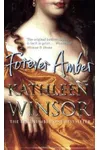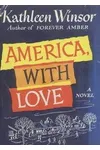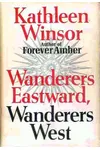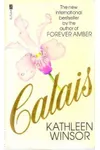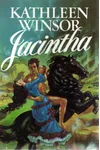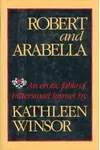Picture a young American novelist who scandalized the 1940s with a sultry, sprawling tale of Restoration England—meet Kathleen Winsor! Best known for her debut blockbuster, Forever Amber, Winsor didn’t just write historical fiction; she redefined it. With meticulous research and a knack for vivid storytelling, she crafted a world of romance, ambition, and unforgettable characters that still captivates readers today.
Born in 1919, Winsor’s journey from a small-town dreamer to a literary sensation is as compelling as her novels. Her bold style and unapologetic heroines paved the way for the modern bestseller, making her a trailblazer in historical romance.
The Making of Kathleen Winsor
Kathleen Winsor was born on October 16, 1919, in Olivia, Minnesota, but grew up in Berkeley, California, where her father worked as a real-estate dealer. A bright, ambitious student, she graduated from the University of California, Berkeley, in 1938. While there, she married Robert Herwig, a football star whose thesis on Charles II sparked her fascination with Restoration England. Winsor briefly wrote a sports column for the Oakland Tribune, but her true passion was storytelling. By 18, she’d already set a goal to write a bestselling novel—a dream she’d soon achieve.
Kathleen Winsor’s Unforgettable Stories
Winsor’s debut, Forever Amber (1944), is a 972-page epic that follows Amber St. Clare, a cunning and resilient heroine navigating love, betrayal, and the decadent court of Charles II. The novel’s racy themes—adultery, ambition, and survival—shocked 1940s America, leading to bans in 14 states. Yet, its vivid depiction of the Great Plague and Great Fire of London, drawn from Winsor’s research of over 350 books, made it a runaway hit, selling over three million copies.
Her follow-up, Star Money (1950), drew from her own fame, offering a semi-autobiographical look at a bestselling author’s life. Later works like The Lovers (1952), Calais (1979), and Robert and Arabella (1986) explored historical and contemporary romance but never matched Forever Amber’s success. Winsor’s style blended meticulous historical detail with bold, unapologetic characters, earning comparisons to Gone with the Wind for its scope and drama.
Despite criticism for its risqué content, Forever Amber laid the groundwork for the modern bodice-ripper, with Amber St. Clare as a flawed yet magnetic anti-heroine. Winsor’s ability to weave real historical figures, like Nell Gwyn and Charles II, into her narratives added authenticity and allure.
Why Kathleen Winsor Matters
Kathleen Winsor’s impact on historical fiction is undeniable. Forever Amber, often called the first modern blockbuster, set a template for epic historical romances that blend meticulous research with unapologetic drama. Its success inspired generations of writers, from Bertrice Small to Barbara Taylor Bradford, who wrote the foreword for its 2000 reprint. Winsor’s fearless portrayal of complex, ambitious women challenged 1940s norms, making her a feminist icon in historical fiction.
Though her later works faded from the spotlight, Winsor’s legacy endures through Forever Amber’s lasting popularity and its 1947 film adaptation. Her story reminds us that one bold book can change a genre—and a writer’s life—forever.
- Born: October 16, 1919, Olivia, Minnesota
- Key Work: Forever Amber (1944)
- Notable Fact: Married four times, including to bandleader Artie Shaw
- Died: May 26, 2003, New York City
Ready to dive into Restoration England’s drama? Snag Forever Amber and lose yourself in Kathleen Winsor’s lush, scandalous world!
